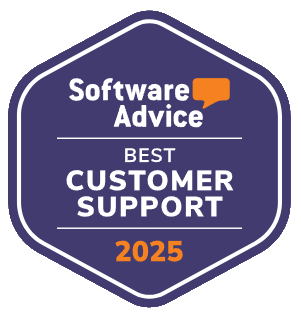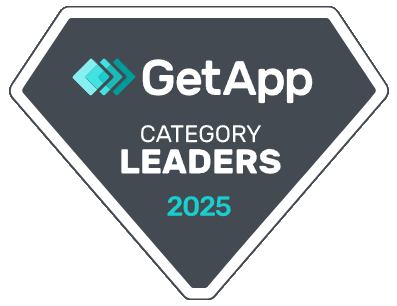When Marty Elwell became Vice President of Customer Support at RingCentral, he took charge of the company’s elite Advanced Support Team—responsible for delivering high-touch service to major enterprise clients worldwide.
These weren’t just high-value accounts; they were global corporations relying on RingCentral’s communications platform to power critical operations. The expectations were immense, and Marty saw both a challenge and an opportunity: improve the customer experience by transforming the operations behind it.
What followed is a compelling case study in support leadership, digital transformation, and measurable results.
Here is the Quick Answer:
A new VP of Support at RingCentral unified fragmented systems under the AI-powered RingCX platform, transforming global support delivery. By automating call summaries, QA reviews, and real-time agent assistance, the team saved time, improved CSAT, and scaled coaching. This case study shows how strong leadership and smart tools can modernize enterprise support operations.
From Fragmented Tools to Unified Vision
Like many fast-growing enterprises, RingCentral’s support tech stack had grown without a clear plan. Tools were added as needed, leading to overlap, inconsistent workflows, and poor visibility. The Advanced Support Team—spread across Dallas, Denver, Paris, London, Manila, and beyond—used slightly different versions of the same systems.
The result was operational friction: supervisors lacked real-time insight, QA efforts were patchy, and frontline managers were bogged down with repetitive, manual tasks. For Marty Elwell, the need for a coordinated support transformation was clear.
The solution? Standardize on a single, intuitive platform that could scale across regions and bring consistency to the entire support operation. That platform was already within reach: RingCX, RingCentral’s own AI-powered contact centre solution.

The Power of the Platform: Enter RingCX
RingCX offered everything Marty’s team needed to modernize operations. It featured real-time supervisor monitoring, whisper coaching, automated call summaries, AI-powered scorecards, and intuitive workflows for agents and managers alike.
More than that, it provided a path to operational excellence. Marty saw it not just as a platform, but as a lever for transformation:
“Between the time-savings RingCX would create and the new capabilities it would give us, we knew RingCX could help our Advanced Support team deliver an even better experience for our top-tier customers.”
— Marty Elwell, VP of Customer Support

Executing a Global Rollout When Failure Wasn’t an Option
Rolling out a new platform across globally distributed support teams is rarely smooth. Marty’s team expected delays, bugs, and training friction. The last-minute decision to add an entirely new team—with IVR redesigns—only raised the stakes.
But RingCX delivered.
Its flexibility and robustness, backed by RingCentral’s Professional Services team, enabled a seamless migration. Overnight, new call flows were produced. Despite the added complexity, the rollout launched on time with zero disruption.
“We assumed the changes would delay everything. But within a couple of days, we were fully ready for rollout.”
— Marty Elwell
Real Results, Not Just Hype: Improving Support Metrics
Once RingCX went live, the impact was immediate:
✔ 192 Hours Saved Monthly: AI-generated call summaries saved agents ~5 minutes per call across 2,300+ monthly calls—reclaiming over 190 hours of productive time.¹
✔ 3× Audit Capacity with AI QA: Supervisors could now score every call, not just a random sample—enabling better coaching and clearer visibility.
✔ 30% Reduction in Admin Time: WFM and manager tasks like scheduling, staffing, and reporting were cut by nearly a third thanks to automation.
✔ 75% Less Time on QA Reviews: AI-generated scorecards replaced manual reviews, boosting both accuracy and supervisor capacity.1
Agent Ranking: One of the First Big Wins
Before RingCX, reassigning agents between call queues was a time-consuming manual process. With Agent Ranking, that changed.
Supervisors could now adjust agent priority within queues without reassigning skill groups. This meant faster, smarter staffing decisions—and a sharp drop in WFM overhead.
“That saves our supervisors and WFM professionals a lot of manual work.”
— Marty Elwell

AI Quality Management: Intelligence at Scale
Traditional QA meant randomly sampling calls and scoring them manually—a slow, subjective process. RingCX replaced that with automation and precision.
Every call is now:
- Recorded automatically
- Scored by AI using performance metrics
- Summarized for quick supervisor review
- Followed up with AI-drafted feedback emails
Supervisors can review 100% of calls, enabling consistent coaching and accountability across the board.
“It’s saving our supervisors at least 75% each week over what used to be manual, random reviews.”
— Marty Elwell
AI Assist: The Smartest Agent in the Room
With enterprise clients, questions are complex—and speed matters. Marty’s team began rolling out AI Assist, a feature that provides agents with real-time suggestions during live calls.
Instead of pausing to search knowledge bases or escalate tickets, agents now get:
- Instant prompts based on the caller’s context
- Suggested responses generated by AI
- Faster resolution without leaving the conversation
The result? Quicker service, fewer escalations, and agents who feel more confident on every call.
“AI Assist significantly enhances our ability to resolve customer questions and issues more quickly.”
— Marty Elwell

Lessons in Leadership: Trust, Tools, and Transformation
Marty’s transformation wasn’t just powered by AI—it was driven by leadership. He understood that new tools only succeed when paired with a clear vision and team buy-in.
His approach included:
- Cross-functional coordination with IT and Professional Services
- Transparent updates to keep agents informed and engaged
- Trust in automation, freeing supervisors to lead—not micromanage
By empowering his team with both smart systems and human clarity, Marty shifted the culture—making change feel achievable, not disruptive.
RingCentral’s Success: Supportbench’s 3-Phase Path to Smarter Support
Marty Elwell’s transformation journey mirrors the Supportbench model for modernizing enterprise support. His actions show how strategic upgrades can create lasting change—when paired with the right tools and structure.
Phase 1 – Stabilization
RingCentral streamlined its fragmented tech stack into the RingCX platform, replacing manual call logging with automated summaries. This reduced backlog and gave agents more time to focus on customers.
Phase 2 – Optimization
The team rolled out AI Quality Management, Agent Ranking, and workforce automation to raise FCR rates, cut escalations, and improve visibility.
Phase 3 – Innovation & Growth
With AI Assist, agents could now resolve complex inquiries faster using live suggestions and real-time guidance—elevating service across their global client base.
Marty didn’t just fix processes—he built a support operation that scales. Supportbench helps teams do the same, using smart systems to turn vision into repeatable success.
In Summary
Marty Elwell’s leadership transformed RingCentral’s enterprise support from fragmented and reactive to streamlined and high-performing. By unifying tools, adopting AI, and building trust across teams, he delivered measurable gains—from hours saved to higher CSAT and audit efficiency.
The core takeaway? Transformation isn’t about technology alone—it’s about clear goals, cross-functional buy-in, and empowering teams with tools that actually work. Marty’s story is proof that modern support can be both smarter and more human.
Supportbench enables that same shift: scalable systems, real-time insights, and AI features built to help support leaders lead better. When strategy meets the right platform, teams don’t just improve—they thrive.















